Smaller houses – smaller gardens
In the inner-suburban areas of most Australian cities, higher density housing is replacing the original single houses on large lots. This has imposed significant impacts on the design of the new landscape and gardens in these areas. Most fundamental of these is a huge change in scale. Native gardens for courtyards and small spaces also have to adapt.
Vegetation

Previously most gardens were large enough to contain several large trees (albeit often too large for the space). With the significantly reduced lot size, there is little room for trees, except in the streetscape.
Shrubs trained as small trees, are often the replacement. The availability of known and trialled native species, suited for these specialised conditions in small urban gardens is limited. If native plants are to take their place in inner-suburban living, then increased research, selection and development is necessary.
It is fundamentally important to enlarge the available plant spectrum to ensure availability in nurseries of suitable proven indigenous species. This is particularly relevant for creating native gardens for courtyards and small spaces, given the shrinking of garden spaces.
Hard landscape
The other major change is the increased need to use of hard surfacing. The common spaces between the buildings will be used as corridors of circulation, rather than as a community social focus.
In these areas minimising the extent of hard surfacing, and selecting the materials used, is extremely important.
Appropriately planned and designed these precincts can effectively expand the space, make it much more than a transition zone, by contributing significantly to the liveable urban landscape space and the related landscape and gardens.
Sense of place
The big challenge in these small urban gardens is the creation of a ‘sense of place’.
Think how best to design it. The landscape and the gardens can be bold or subdued, but must be derived from the aesthetics of the location, and the architectural qualities of the surrounding structures.

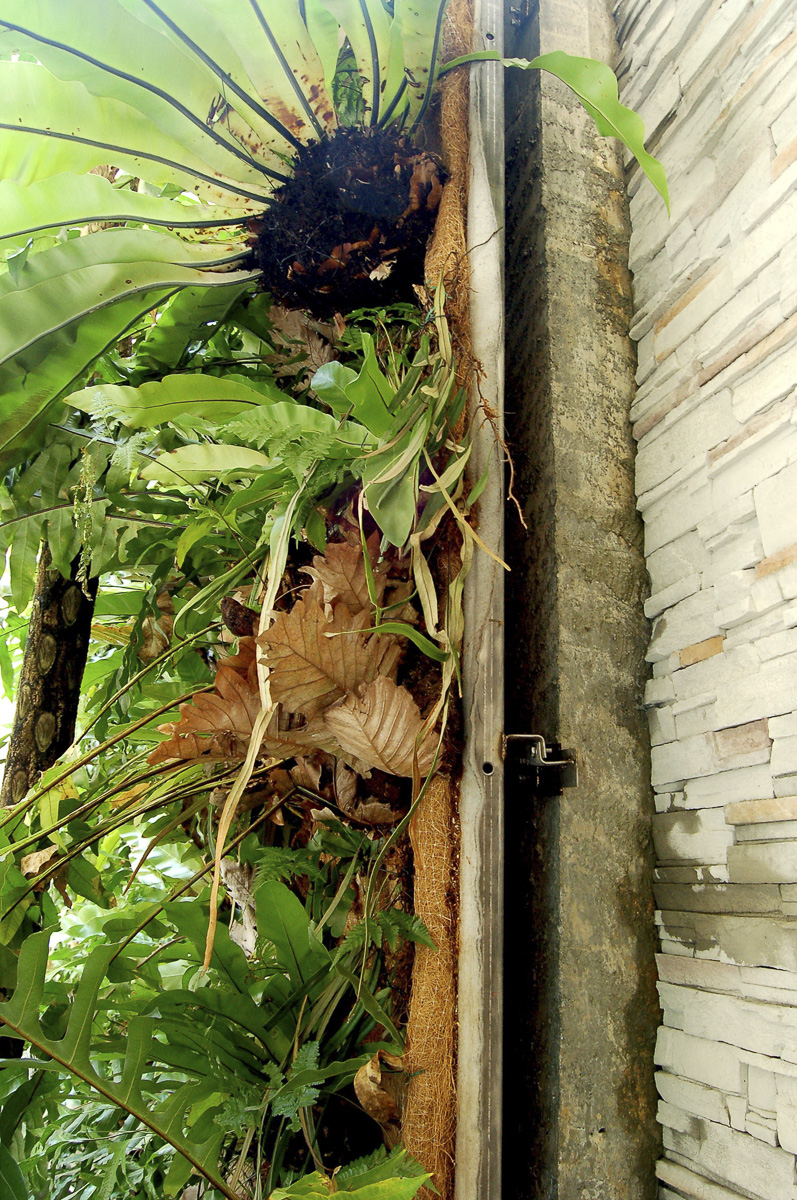

Careful selection of plant material can grow to quickly compliment the visual environment. Confine plant selection to a limited palette of plants. One example – in full sun, choose bold, dramatic Australian plants (Doryanthes, Xanthorrhoea etc) in the style of Roberto Burle Marx, and treat them like living sculptures.
Alternatively, choose a selection of ferns and let their soft patterns and textures create a feeling of peacefulness in cool shaded precincts.
Illusion of space
Create the illusion of increased space in a small garden area, by using glass wails to visually extend the garden into the house and vice versa. Increased depth can be created by careful choice of wall colours – white extends apparent space. Matt black suggests shadow and gives the illusion of on-going depth. Careful colour use and choice can make a distinctive contribution.
Cooling water
A still reflective pool running parallel to the edge of a wall adds apparent depth to a garden. Running water can add to this effect. Small gardens benefit from contemporary style sculptural water features that bring light and movement into the space.
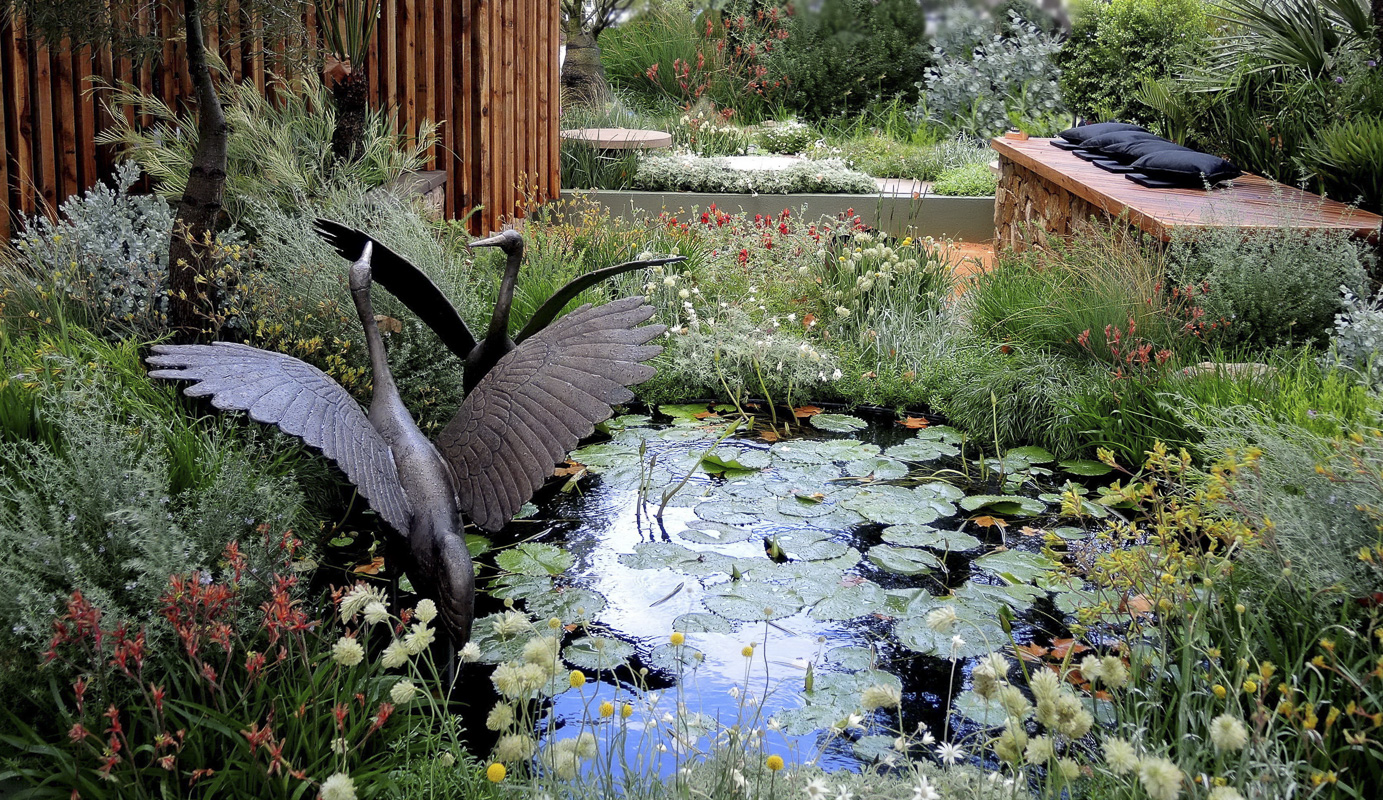
Courtyard walls
Emphasise the importance of the vertical planes of the walls. In small courtyard spaces walls need to be friendly and part of the living space, also integral with the whole design. Consider innovative material selection and texture to provide appropriate interest.
Areas of enclosed hard surfacing can get very hot in summer. Shade structures are positive additions and the best solution for the midday sun.
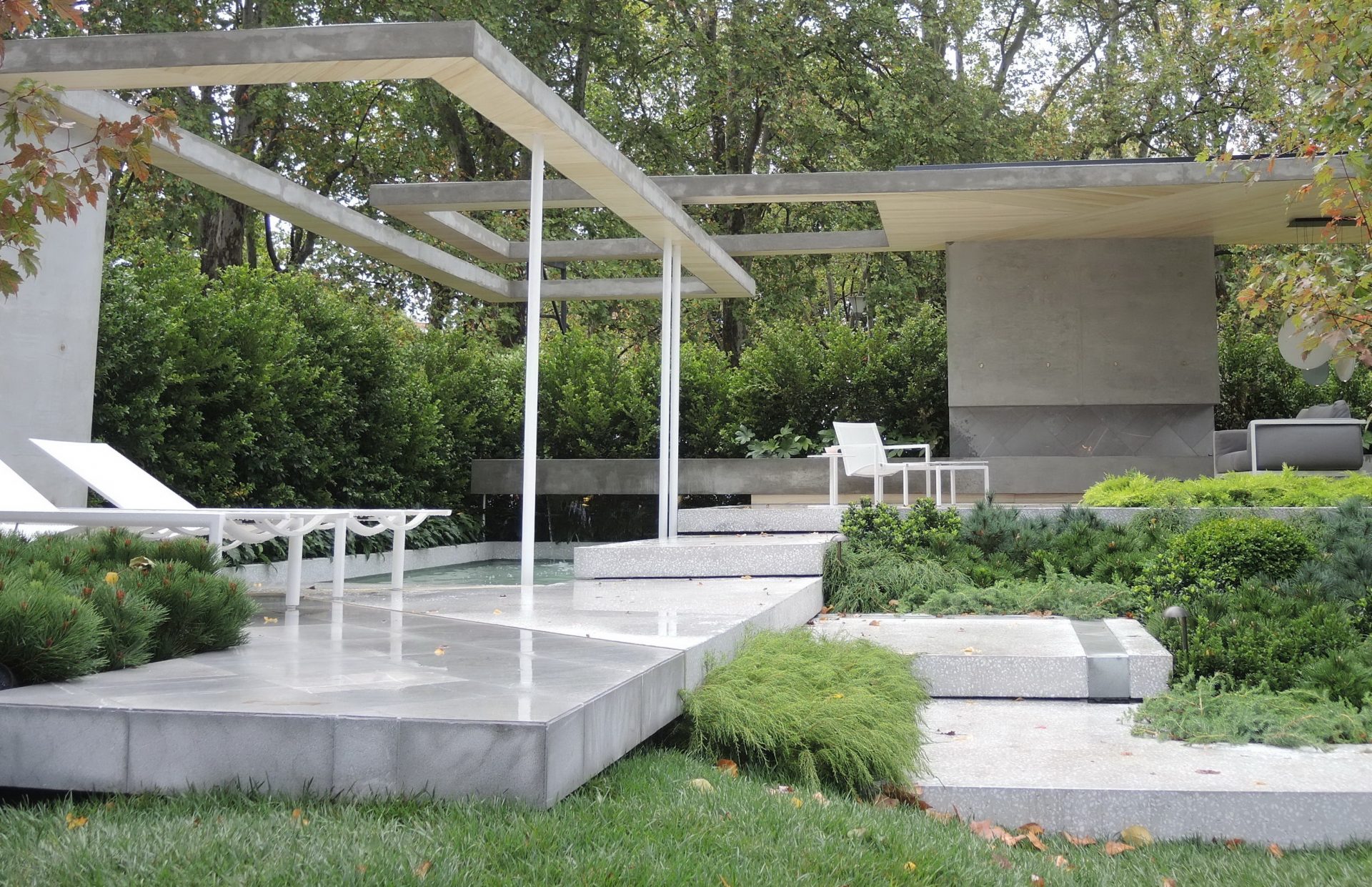

Courtyard microclimate and plants
Small courtyards often have deep shade, except for a burst of hot sun in the middle of the day. Choose plants that tolerate and thrive in full sun and full shade conditions.
Courtyards lend themselves to container gardening. Planters can be built into the walls at different heights. Use plant material in exciting ways to give walls texture and life. Three dimensional ‘garden tiles’ hung artistically create decorative features like ‘Green Walls’.
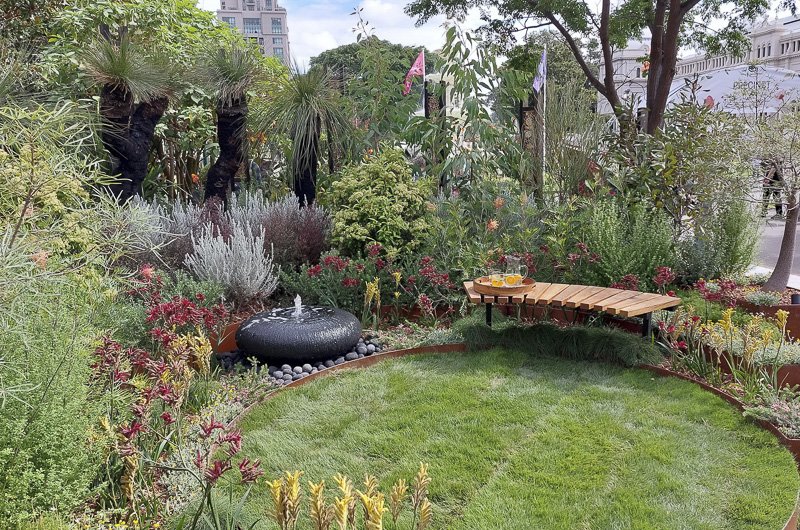
Colour in the courtyard
Make use of dramatic wall colour, resist invisible background colour. The Sante Fe gardening style of USA, uses colour successfully – in rich tones of ochres, purples and midnight blues. Our Australian palette is even more dramatic and appropriate – every bioregion across the continent offers a different colour canvas!

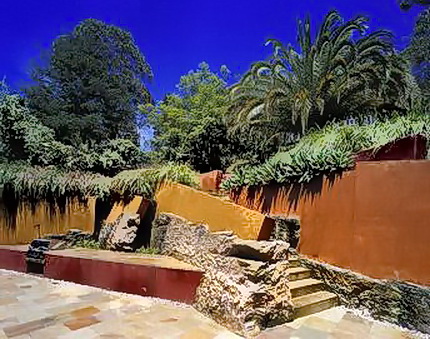
Colours of California reflected in the built courtyard walls create a sense of place, Jeff Howes; Colours of Australia reflected in the built courtyard walls and plants create a sense of place, Lawrie Smith
Attention to detail
The most important design challenge for any small garden or courtyard space is to pay great attention to detail. Take care with garden edging and transition zones. Keep furniture and ornamentation to scale and in character. Ensure hard surfaces and walls are complimentary in material and colour. Make sure that plant selection is dictated by the physical, functional and microclimatic impositions. Observe these and many other planning considerations in addressing these new urban landscape challenges. This way, native gardens for courtyards and small spaces will add to the character of our living spaces.
Drawn from an article by Professor Ruth Beilin, https://ess.science.unimelb.edu.au/professor-ruth-beilin/.
 Australian Native Plants Society (Australia)
Australian Native Plants Society (Australia)